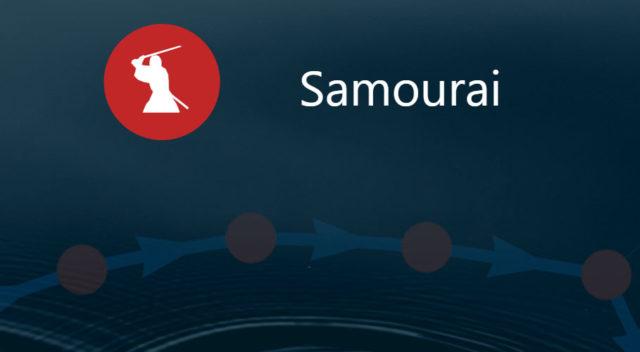What would happen if aliens contacted us? It’s a longstanding question that now has at least a partial answer, after a transmission designed to mimic correspondence from an extraterrestrial civilization arrived from Mars to Earth.
The event – organized by SETI, a non-profit organization with a mission to seek out extraterrestrial intelligence and explore the origin of life in the universe – straddles the line between art project and technical essay.
It is intended to explore the process of decoding and interpreting an intelligent signal from the cosmos and how this would affect humanity.
The message was sent on May 24 by the ExoMars Trace Gas Orbiter, a spacecraft launched in 2016 that currently orbits Mars to study its atmosphere.
The transmission traveled through space for 16 minutes before being successfully picked up by three observatories: the Allen Telescope Array in Northern California, the Green Bank Telescope in West Virginia and the Medicina Radio Astronomical Station near Bologna, Italy.

Once received, the raw data containing the message was posted on the internet via Filecoin, a large decentralized storage network, to give everyone a chance to decode it and interpret its meaning. A few days later, the collaborative effort is still ongoing and a channel on the Discord platform has been created for public discussion.
“I can’t say anything about the content of the message, and we’ll only start giving some hints if we see that people really put in effort,” said Daniela de Paulis, a member of SETI, the artist who created the message, in a phone interview.
“It will take some time, because it requires people with different expertise to collaborate with each other, which was really the aim of the project: an extraterrestrial message would be from all of humanity, so we should all have the ability to contribute to its interpretation.”
Deciphering an alien transmission
De Paulis, who is also a licensed radio operator, began work on the project, called “A Sign in Space,” in 2021.
“I was working with astronomers, anthropologists and other scientists, it was a very interdisciplinary group and we also had artists from different fields,” she said.
“We were meeting monthly, brainstorming ideas about what a possible extraterrestrial civilization would send us. After that, I narrowed the group down to five people, and eventually to three – because it was so important that as few people as possible knew about the content.”
The message, which is only a few kilobytes in size, had to be separated from the rest of the raw data received during transmission, which can include background noise, telemetry data and spurious information.
This first stage of the process, according to dePaulis, requires very specific technical knowledge. “But then, everyone can participate in the cultural interpretation, which for me is the most exciting part,” she said.

The event also served as a dress rehearsal for all the steps involved in correctly identifying and processing an intelligent extraterrestrial signal.
“It’s not as trivial as people think,” de Paulis said. “NASA and ESA do two-way communication with their spacecraft all the time, but they have their own dedicated equipment. we had to establish [a transmissão] completely from scratch… This was really quite complex and took almost two years of work.”
According to Wael Farah, a radio astronomer and data analyst at the SETI Institute who participated in the event, it is important to spread the knowledge that receiving an alien transmission is not equivalent to understanding its meaning and that, although an intelligent signal is easy to recognize, the process would still be cumbersome.
“There’s a whole series of rigorous tests that can take months,” he said. “It’s not like the movie ‘Contact,’ where Jodie Foster has her headphones on and all of a sudden she grabs something. We don’t want to generate a false alarm.”
Among the checks would be the certainty that the transmission does not come from any human spacecraft and that it can be received in exactly the same way by different telescopes, which is why the test involved three of them. But the event also correctly simulates the fact that it would not be up to SETI to decipher the message, just to point out its reception.
“From a radio astronomer’s point of view, I don’t really care what the signal contains – what I care about is picking up a signal that doesn’t look natural,” Farrah said.
The experiment, believed to be the first of its kind, has a logical home in SETI, which was founded in 1985 and has been waiting to receive an ET message ever since. However, neither SETI nor any other organization on Earth has picked up any intelligent signals from the stars.
Among the original curators of SETI was Frank Drake, an American astrophysicist who brought the discourse of extraterrestrial life into the mainstream and co-designed the plaques that were aboard the Pioneer 10 and Pioneer 11 probes sent into space by NASA in 1972 and 1973.
They featured a pictorial message – intended for extraterrestrials – that included naked female and male human bodies and a map of the solar system.

In 1974, Drake also composed an interstellar radio message that was sent on April 16, 1974, toward a star cluster known as Messier 13, during a ceremony to mark the completion of upgrades to the Arecibo Observatory in Puerto Rico. .
The message, which contained just 1,679 bits of data, included information about basic numbers, chemical compounds, human DNA and the Arecibo telescope itself, but was intended to be more of a proof of concept than an actual attempt to contact aliens. looked like last week’s event.
Unraveling the meaning of “extraterrestrial” data
Neill Sanders, of the British amateur astronomy group Go Stargazing, is participating in the global effort to decode the transmission and said he has already reached a milestone in the initial and unraveling part of the process.
“The hidden message within the transmission has been obtained. However, the challenge now is to ensure that what was obtained is accurate,” he said.
Trying to verify accuracy is a really interesting scenario, he added, as the sender of any message – in this case, the Trace Gas Orbiter orbiting Mars – would want to ensure that the message is not misinterpreted by the recipient, either through errors during the transmission or processing.
Now that the layers have been peeled back and the message revealed, an even more delicate part of the process begins. “We get to the data quickly, but deciphering the message and what it means can take much longer. I think they created a significant challenge.”
Source: CNN Brasil
Charles Grill is a tech-savvy writer with over 3 years of experience in the field. He writes on a variety of technology-related topics and has a strong focus on the latest advancements in the industry. He is connected with several online news websites and is currently contributing to a technology-focused platform.






